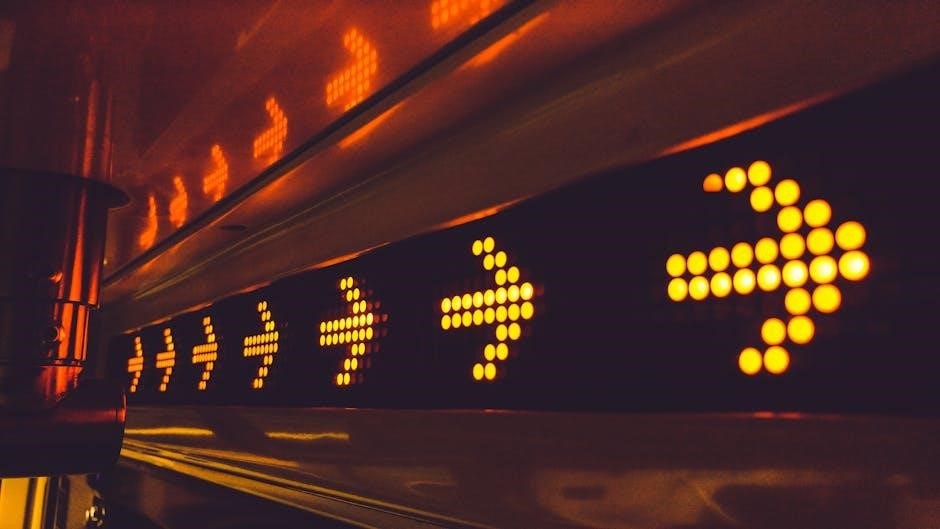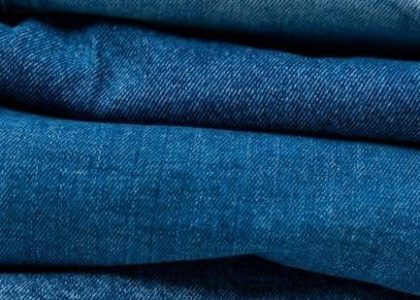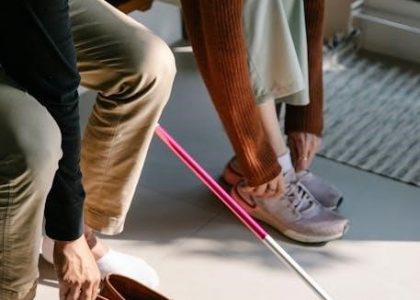This comprehensive guide as of 04/02/2025 at 13:02:41, brings together various “Ellis” tuning methodologies. Including guitar tuning, 3D printer calibration, and general DIY instrument modifications. This guide helps you tune your instrument and 3D printer!
Welcome to the world of “Ellis” tuning, a multifaceted approach applicable across various domains, from musical instruments to 3D printers. This guide serves as a central hub, providing resources and methodologies associated with the “Ellis” name in the context of tuning and calibration. Whether you’re a guitarist seeking optimal performance or a 3D printing enthusiast striving for print perfection, the principles of “Ellis” tuning can enhance your results.
Within these pages, you’ll discover guides tailored to specific applications. For musicians, we delve into alternate guitar tunings and string selection. For makers, we explore calibration techniques for 3D printers, drawing heavily from the renowned Andrew Ellis Tuning Guides, considered by many as the gold standard in the 3D printing community.
The underlying philosophy of “Ellis” tuning emphasizes a meticulous, step-by-step approach, prioritizing accuracy and stability. The aim is to equip you with the knowledge and tools necessary to achieve consistent and reliable results, regardless of your chosen craft. Let’s embark on a journey to unlock the full potential of your instruments and machines through the art of “Ellis” tuning.
Guitar Tuning Guide (Warren Ellis Guitars)
Explore alternate tunings and optimal string choices for Warren Ellis guitars. Maintain tuning stability with DIY mods, using Jacks Instrument Services’ expertise. Enhance your Warren Ellis guitar experience.
Alternate Tunings for Warren Ellis Guitars
For Warren Ellis guitar enthusiasts seeking to expand their sonic palette, exploring alternate tunings opens up a world of creative possibilities. These tunings can dramatically alter the instrument’s voice, inspiring new chord voicings, melodic ideas, and overall playing styles. Whether you’re drawn to the haunting resonance of open tunings, the modal character of DADGAD, or the unique textures of other less common configurations, experimenting with alternate tunings can unlock fresh perspectives on your instrument.
Each alternate tuning possesses its own distinct character and is particularly well-suited for certain genres or playing techniques. Open tunings, for instance, are frequently employed in blues and slide guitar, while DADGAD has become a staple in folk and Celtic music. Beyond these popular choices, numerous other tunings await discovery, each offering a unique set of challenges and rewards. By venturing beyond standard tuning, guitarists can tap into a vast reservoir of untapped potential, pushing the boundaries of their musical expression.
Best Strings for Each Tuning
Selecting the appropriate strings is crucial for optimizing both playability and tone when using alternate tunings on Warren Ellis guitars. Different tunings place varying amounts of tension on the strings, necessitating adjustments in string gauge to maintain comfortable feel and prevent potential damage to the instrument. For example, lower tunings often require heavier gauge strings to avoid excessive floppiness and maintain adequate string tension. Conversely, higher tunings may benefit from lighter gauge strings to prevent breakage and ensure ease of play.
The specific string material also plays a significant role in shaping the overall sonic character of the guitar. Nickel-wound strings offer a warm, balanced tone that is well-suited for a wide range of musical styles, while stainless steel strings provide a brighter, more articulate sound that is ideal for genres such as rock and metal. Ultimately, the best strings for each tuning will depend on individual preferences and the desired tonal outcome. Experimentation with different string gauges and materials is encouraged to find the perfect match for your unique playing style and musical vision.

Guitar Maintenance: Tuning Stability
Maintaining tuning stability is essential for all guitar players. Jack Ellis, from Jacks Instrument Services, and this guide, offers DIY guitar modifications and tips. These help improve tuning stability, ensuring your instrument stays in tune.
Improving Tuning Stability
Achieving consistent tuning stability on your guitar involves several key factors. First, ensure your strings are properly stretched after installation. New strings tend to stretch and settle, leading to frequent tuning adjustments. Gently pull on the strings along their length to accelerate this process.
Next, examine your guitar’s nut. The nut slots should be wide enough to accommodate the strings without binding. Binding can cause strings to catch and then slip, resulting in tuning instability. Lubricating the nut slots with graphite or specialized nut sauce can significantly reduce friction.
Additionally, consider the condition of your tuning machines. Worn or loose tuning machines can contribute to tuning problems. Ensure the tuning machine screws are tightened, and consider upgrading to higher-quality tuners for improved precision and stability.
Finally, be mindful of temperature and humidity changes. Wood is susceptible to environmental factors, which can affect neck stability and intonation. Storing your guitar in a controlled environment can help minimize these effects and maintain better tuning stability over time. Regular maintenance and attention to these details will contribute to a more reliable and enjoyable playing experience.
DIY Guitar Mods for Tuning
Enhance your guitar’s tuning stability with simple DIY modifications. Start by upgrading the nut to a bone or Tusq nut. These materials offer lower friction than plastic, reducing string binding. Carefully file the nut slots to the correct width and depth for each string, ensuring smooth movement.
Consider installing locking tuners. Locking tuners secure the strings, preventing slippage and maintaining tuning even with heavy use. They also make string changes faster and easier.
Another effective mod is adding string retainers. String retainers increase the break angle of the strings over the nut, improving contact and reducing buzzing. Experiment with different retainer heights to find the optimal angle.
For tremolo-equipped guitars, a tremolo stabilizer can greatly improve tuning stability. These devices prevent the tremolo from moving excessively, minimizing tuning fluctuations.
Finally, shielding the electronics cavity can reduce unwanted noise and improve overall tone. This involves lining the cavity with copper foil or conductive paint. These DIY mods enhance tuning stability, making your guitar more reliable and enjoyable.

3D Printer Tuning (Andrew Ellis Guide)
This section focuses on the Andrew Ellis Tuning Guide. The gold standard for 3D printer calibration. It offers a step-by-step approach for reliable results. It sets the benchmark for calibration.
Calibration Standards
When delving into the Andrew Ellis Tuning Guide for 3D printers, understanding the established calibration standards is paramount. These standards serve as the foundation upon which precise and consistent printing results are built. The guide emphasizes the importance of meticulous calibration, advocating a step-by-step approach to ensure accuracy at each stage.
Key calibration standards include extruder calibration, which focuses on ensuring the correct amount of filament is extruded. Also, pressure advance calibration, which compensates for pressure variations within the nozzle. These standards are not mere suggestions, but rather essential practices for achieving optimal print quality.
Furthermore, the Andrew Ellis guide stresses the significance of gantry squaring for Voron V2 printers, ensuring mechanical alignment. This attention to detail underscores the guide’s commitment to comprehensive calibration. By adhering to these standards, users can unlock the full potential of their 3D printers, achieving prints that meet the highest levels of precision and fidelity. These standards are widely regarded as the gold standard in the 3D printing community.
Step-by-Step Calibration Approach
The Andrew Ellis Tuning Guide champions a step-by-step calibration approach, emphasizing methodical precision in 3D printer tuning. This approach, recognized as the gold standard, ensures each calibration parameter is addressed individually, building a solid foundation for optimal print quality. The guide advocates for meticulous extruder calibration, carefully fine-tuning filament extrusion.
Next, it addresses pressure advance calibration, compensating for nozzle pressure variations during printing. The step-by-step methodology extends to mechanical aspects like gantry squaring on Voron V2 printers. It ensures perfect alignment before any printing commences. Each step is meticulously documented, providing clear instructions and expected results.
This structured approach minimizes errors and allows for accurate diagnosis of any issues. By following each step diligently, users can achieve reliable and consistent results. The guide helps to unlock the full potential of their 3D printers. The Andrew Ellis guide prioritizes accuracy and repeatability in every aspect of printer calibration.

3D Printer Calibration Guide
This guide helps you calibrate and tune your 3D printer from A to Z and should work with most common printers and firmwares! Before you start, set your expectations, to achieve the best outcome.
General Calibration and Tuning
General calibration and tuning involves several crucial steps to ensure your 3D printer operates optimally. It is highly recommended to follow Andrew Ellis’s tuning guides. This is considered the “GOLD standard”. He provides a step-by-step approach, proving reliable and setting a benchmark for printer calibration.
Begin with extruder calibration to ensure the correct amount of filament is extruded, leading to accurate prints. Next, conduct pressure advance calibration to minimize oozing and improve corner quality. This will enhance the overall surface finish of your prints. Bed leveling is also crucial for first-layer adhesion, guaranteeing a solid foundation for subsequent layers.
Fine-tuning temperature settings can prevent warping and improve layer adhesion. Regular maintenance, such as cleaning the nozzle and checking belt tension, can further enhance print quality. By meticulously following these steps, you can achieve consistent and high-quality prints with your 3D printer.
Compatibility Notes
When utilizing this calibration and tuning guide, it’s crucial to consider compatibility with your specific 3D printer model and firmware. Some information within this guide may not directly apply to all printers, particularly those from Bambu Lab. This is due to the unique design and pre-configured settings often found in these printers.
Always reference your printer’s documentation and firmware specifications to ensure compatibility with the calibration steps outlined. Modifications that are not supported by your printer’s firmware can lead to unexpected issues or damage. Be aware of the specific G-code commands and parameters supported by your system. Also, check the range of acceptable values for temperature, flow rate, and other settings.
Exercise caution when implementing changes, and always test new settings incrementally. This will allow you to identify potential compatibility issues early on. Seek guidance from online communities or manufacturer support if you encounter any uncertainties.

Ellis Print Tuning Guide
Welcome! This guide is designed to help calibrate and tune your 3D printer from A to Z. It should work with most common printers and firmwares, including extruder and pressure advance calibration for optimal printing results.
Extruder Calibration
Extruder calibration, a crucial step in achieving optimal 3D printing results, involves ensuring your printer extrudes the correct amount of filament. Accurate extrusion is paramount for dimensional accuracy, layer adhesion, and overall print quality, aligning with the Ellis Print Tuning Guide’s philosophy. Begin by marking a length of filament, typically 100mm or more, and commanding the printer to extrude a specific amount.
Carefully measure the actual length of filament extruded. Discrepancies indicate the need for adjustment in your printer’s firmware settings. Modify the “esteps_per_mm” value in your configuration file, iteratively adjusting until the measured extrusion matches the commanded amount. This meticulous process, as detailed in the Andrew Ellis Tuning Guide, guarantees that your printer accurately translates digital models into physical objects.
Regularly revisiting extruder calibration is recommended, as factors like filament type and extruder wear can influence extrusion rates over time. This ensures consistent, high-quality prints. Also, remember that this is a crucial step for further fine-tuning your 3D printer.
Pressure Advance Calibration
Pressure Advance Calibration, a vital step in fine-tuning 3D printer performance, addresses the issue of oozing and corner rounding, and is described in the Ellis Print Tuning Guide. It compensates for pressure buildup in the extruder during printing, resulting in sharper corners and cleaner starts and stops. The goal is to find the optimal setting that minimizes these imperfections without causing under-extrusion.
The process involves printing a test pattern, typically a series of cubes or lines with varying Pressure Advance values. By visually inspecting the printed pattern, you can identify the setting that produces the best compromise between sharp corners and consistent extrusion. Too little Pressure Advance results in rounded corners and stringing, while too much leads to gaps and weakened layer adhesion.
Iteratively adjust the Pressure Advance setting in your printer’s firmware, reprinting the test pattern until the desired balance is achieved, as detailed in the Andrew Ellis Tuning Guide. This calibration ensures optimal print quality, particularly for intricate designs and high-speed printing.





